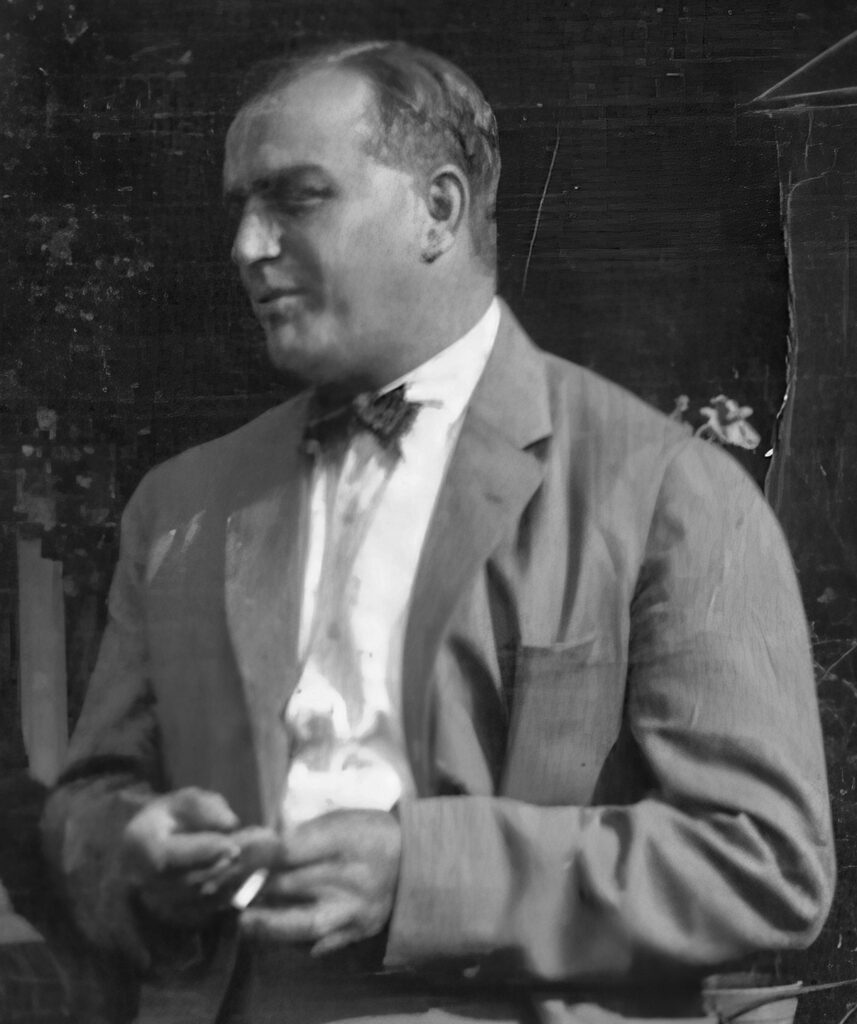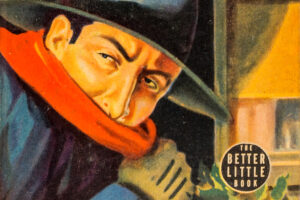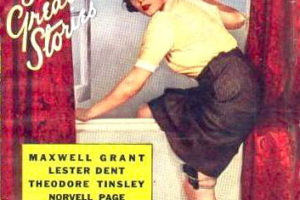L. Patrick Greene (1891-1971) is a pulp author probably best known for his series about English adventurer Aubrey St. John Major, aka “the Major.”

Born in England, Greene worked as a young man in Rhodesia for several years before being sent home after hurting his back. He would use this experience in his writing. He moved to the U.S. in 1913 and became a U.S. citizen.
In 1918, he started to write fiction for Adventure magazine, where the Major first appeared. He soon became an associate editor at Adventure, which forced him to write for other pulps. The Major moved to Short Stories where he mainly appeared from then on. Greene wrote for other pulps as well, including Action Stories, Everybody’s, Blue Book, and many more.
He would return to England, I think in the 1930s, and would join the RAF in 1939, which caused a pause in his writing career, which he restarted after the war.
As noted, his major (though not only) series character is Aubrey St. John Major. Aided by his servant and friend Jim the Hottentot, Major was an illicit diamond buyer, illegally trading diamonds in South Africa. Basically, if you bought diamonds from the locals, it was considered illegal. But despite this, he often helped the innocent and sent criminals to jail (or ensured they came to justice), and was respected by the locals as a “man among men.”
Over 100 stories of the Major were written between 1919 and 1948, and during Greene’s lifetime, 19 books collecting the Major were published. Today, Steeger Books is reprinting the whole series, and has put out four volumes with a total of 36 stories, so about a third of the way through.
The Major is a real character. He is always dressed in immaculate, white linen clothing, with a pith helmet and weapons. He wears a monocle in his right eye. His manner of speaking makes him seem a dude and an easy target, almost like a fop. But those who cross him soon discover otherwise. In one story I read, he bodily picks up a man, holds him over his head, then turns him over his knee and spanks him like a misbehaving child!
Unsure if I wanted to get into this character, I recently obtained a pair of chapbooks put out by Black Dog Books. One is titled Fire and Other Stories of the Major (2000) that collects two stories from 1930: “Fire” (June 10) and “Trapped” (June 25); and the second was Witchcraft, More Stories of the Major (2002) that collected two stories from 1927: “A Hottentot’s God” (February 25) and “Witchcraft” (June 10). None of these four have yet to be reprinted by Steeger Books. These were my first time reading the Major.
In “Fire,” we find the Major and Jim relaxing on the veldt, when they hear a strange sound. This leads to the Major finding a young man shot dead. The same time, Jim is captured by three Boers. The Major gets the better of them, only to be himself captured by their leader, a rat-faced man named Gregson. It’s all to find gold discovered by the dead man and his associates, killed by Gregson. But the Major had sworn he would come to justice: jungle justice. Read what that is, and what the title means.
In “Trapped,” the Major is tricked by a group of natives working for the South African Mounted Police into buying a diamond, a crime. But the police are there for bigger fish, a man known as Dago Pete who bought out a trading post and is selling illicit liquor to the locals for diamonds. The Major will help the police as he opposes this. But will he be able to get out of being charged for illegal diamond buying?
In “A Hottentot’s God,” Jim and the Major run afoul of a pair smuggling diamonds out of the area. The pair, Cherub Baines and Toad Anders, had hired Dutchman Nessor to take them in his wagon, but Nessor has sold it had his mules to the Major. Baines is also selling illicit liquor to the locals, which the Major does not approve of. Jim and the Major are separately taken out, but they both get the better of the pair and come out on top. With an ample profit thanks to the diamonds.
In “Witchcraft,” an evil diamond prospector, Jake Sternberg, who is really one of the worse illicit diamond buyers, cheats and whips a native. The man’s father is a witch doctor and friend to the Major. This prospector runs afoul of the Major and worse, whips Jim. But there is murder, and a ghost to expose the murderer before it’s all over. The witch doctor and the Major get what they want.
As I noted, the Major is an interesting character. His relationship with Jim is more partner/friend than master/servant. And he is respected by the locals and is a friend to them. This is one way you know the difference between him and the other characters, especially the bad ones. His only “criminal” activity is buying diamonds from the locals, but he opposes all other crimes. Clearly, he was a popular character to last as long as he did.
Another chapbook put out by Black Dog Books is L. Patrick Greene’s Tales of the Jungles, with three short stories in 2005. It’s a nice collection of other stories by Greene, all from the same pulp magazine with a color cover (unsure of the source). Man Stories was published by a small publisher in the 1930s for eight issues then became Popular Fiction for nine. Then under a new publisher was retitled Nickle Detective and later Strange Detective Stories. Most of the authors I don’t recognize, but I see Greene a few times, along with J. Allen Dunn, H. Bedford-Jones, and Hugh B. Cave.
Here we get “Cobwebs” from Man Stories (March/April 1931), “Yellow” in Man Stories (July 1931), and “Jungle Fate” in Popular Fiction Magazine (November 1931).
In “Cobwebs,” our hero John Flame is in Papua looking for his brother. The title is taken from a practice there of creating fishing nets from cobwebs created in bowed wood. John’s brother was a trader-missionary, and is dead. John is looking for the grave and winds up at a trading post where he learns the post had been his brother’s, but the trader won’t tell him what happened to his brother. The locals dump him in the jungle near a different village ruled by “The Spider.” There John will learn what happened to his brother.
In “Yellow,” we met a canteen clerk of a mine in Africa who is known only as “Yellow.” Because he is viewed as a coward. He has to endure various indignities because of this. But his experiences with a dog similarly accused starts him on his road to redemption.
In “Jungle Fate,” we meet two explorers. Sam Harmer and his partner Gates are looking for the fabled elephant’s graveyard. But Sam is a brute, who mistreats the locals, such as the pygmies, while Gates is a decent man and wants nothing to do with this. What then will be their fates in the jungle?
In addition to these two chapbooks, you can also obtain a couple of issues of High Adventure #179 and 184 that contain several of his stories. And these use covers from Man Stories. At some point, I will obtain and review them here.




Your comments